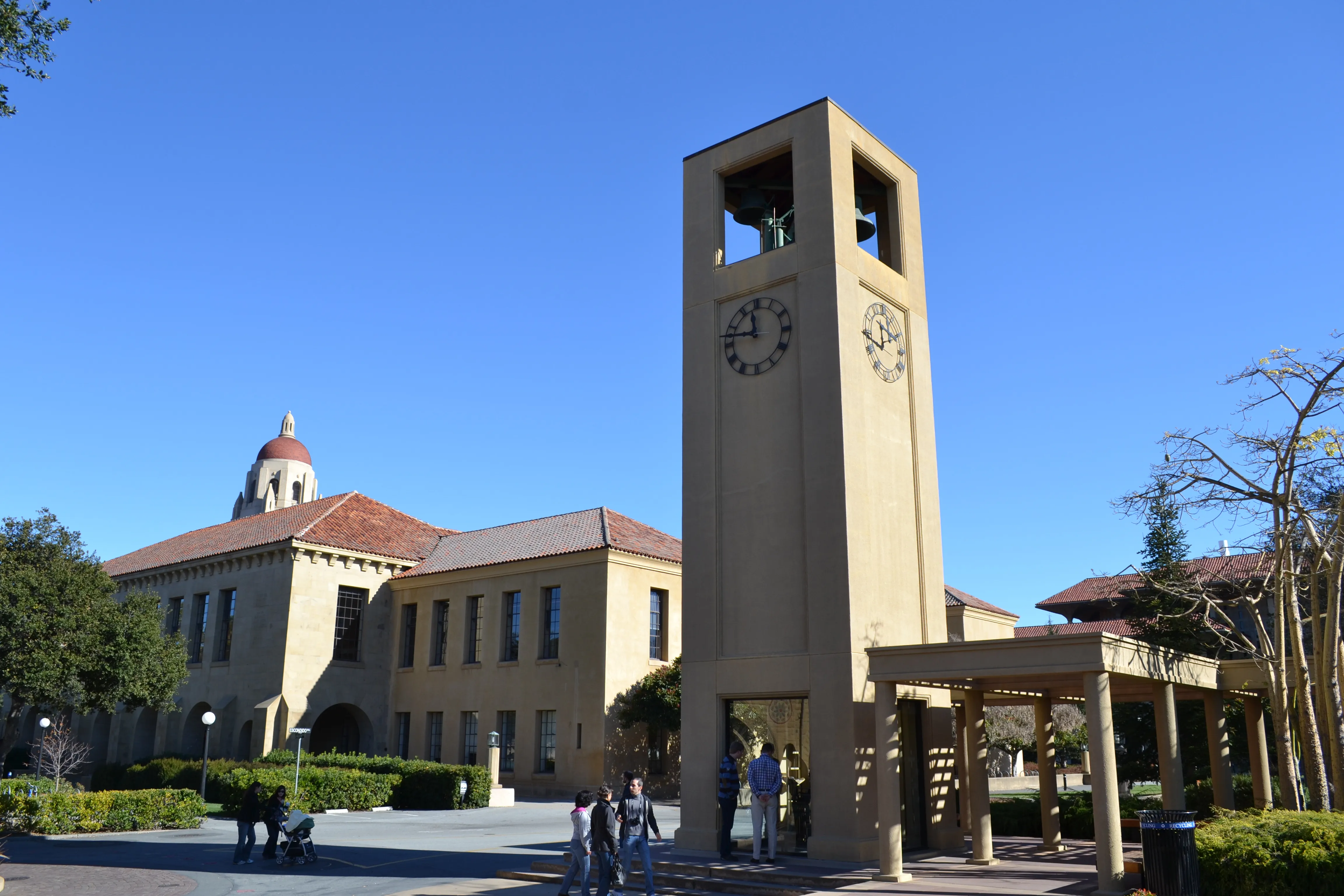Observant students may have noticed that the Stanford Clock Tower has been about six minutes behind schedule this quarter.
The truth is, the clock was actually a full 12 hours off, as well.
Gibson Anderson ‘67, a Bonair Siding employee who volunteers to fix the clock when necessary, noticed that the chimes set to sound each morning on the quarter-hour had not been going off. Anderson came to campus Thursday afternoon to check on the clock and realized that it was running off by a half day.
Anderson began to fix the clock around 5 p.m., accounting for the numerous cycles of the Westminster chimes and the fast-moving hands observers heard and saw on the clock yesterday afternoon. Anderson will return today, having been unable to continue working after sunset.
“The clock hasn’t been maintained in a while because the Ph.D. student doing that finished his degree and went to Europe,” Anderson chuckled.
“But what he would do is come in every now and then to check on the clock and either add or take away weights to fine-tune the pendulum,” Anderson said, motioning toward some small metal chips on top of the clock’s pendulum.
In accordance with Jane Stanford’s request, the Seth Thomas Clock Company, at the time one of two leading tower clock makers built the clock in 1901, Anderson said.
The clock was originally housed in Memorial Church; however, when a 1906 earthquake hit campus, the clock was not replaced. Instead, it was held temporarily near the church.
Then, in 1983, William Kimball, an alumnus of Stanford University, donated enough money to build a clock tower at the corner of Escondido and Lasuen Malls, right next to the “Circle of Death,” where it remains today. The face of the original clock is on the inside of the clock tower.
“At some point, the Mechanical Engineering Department took over,” Anderson said. “There was some minor damage on the clock, but the engineering department did some really great renovation to it. You can’t even notice it,” Anderson continued, pointing down at the pendulum, “but the pendulum was changed as well.”
One of the major problems with such large timepieces is the fluctuation in the swing of the pendulum due to changes in the temperature, Anderson said. Heat would cause the metal in the pendulum to expand.
So in 1997, the pendulum was replaced with a new one that uses two kinds of metal. The metals expand in different directions at different rates, thereby leaving the length of the pendulum unchanged and temperature-compensated.
The clock still has to be wound up every four days, however. Three cranks are on one side of the gears, with one operating the time, one operating the hour intervals and the last operating the quarter intervals. On the other side are propellers, with blades set to a very specific slope in order to get just the right amount of air resistance to keep time.
A yellowed logbook lies at the ladder of the clock tower, where names, dates and the accuracy of the clock have been recorded. Until about Jan. 7, of this year, the clock had only been 10 to 15 seconds off the actual time. The clock is recalibrated according to an atomic clock, which lies in the corner of the bottom of the clock tower.
The clock was cleaned about two years ago–completely taken apart and put back together again–and every so often someone goes up the tower to clean the bells.
Today, the clock tower remains the most complete mechanical clock displayed in the Bay Area, telling time, ringing on the hour and chiming at every quarter. All the gears that run it are still the originals, except for one gear that was recast by the Engineering Department.
“A clock is nothing but a big gear. It’s all mechanical,” Anderson concluded. “The first mechanical clock was built in 1000 A.D., but there haven’t been any revolutionary changes in the creation of clocks. There have only been incremental changes in the making of clocks. The clock’s lost about a minute each week–that’s actually pretty good. For a big machine, this is as accurate as it’s going to get.”
Contact Catherine Zaw at czaw13 ‘at’ stanford.edu.
